If these objects could talk ... 'Secret Lives' at Chicago History Museum
This entry was posted on March 26 2015 by Eric
Steve Johnson
CHICAGO TRIBUNEsajohnson@chicagotribune.com
Nathan Leopold's eyeglasses, eyewitness to an infamous murder — and evidence of it. Ann Landers' typewriter, conduit for common-sense advice. Booth One at the Pump Room, marker of status and coddler of scores of celebrity posteriors.
The terrific new exhibition "The Secret Lives of Objects" at the Chicago History Museum demonstrates once again how fruitful it can be to send curators back into the vaults. At a place with a solid collection, they're going to come up with items as compelling as the ones mentioned above.
When museums do these type of look-what-we've-got shows, it's almost always fascinating. They remind visitors that there's a lot more to good institutions than what's typically in the galleries, and they liberate from storage some superb pieces that might have a hard time fitting into an exhibition with a more specific theme or narrative.
So history museum visitors can now see one of the surveillance cards the Chicago Police Department's infamous "Red Squad" filled out to make note of the activities of the leftist author and historian Studs Terkel. On the 1971 day the card records, "Subject participated in (redacted) protest demonstration at County Bldg."
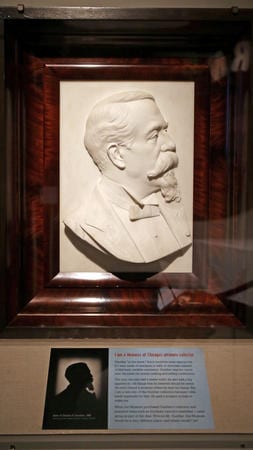
Phil Velasquez / Chicago Tribune
A bust of Chicago collector Charles Gunther from 1891. Gunther was the ultimate collector, many of his pieces are part the Chicago History Museum's collections.
They can see the bamboo cane Charlie Chaplin used for "His New Job," the one film he shot in Chicago.
And they can see the piano on which Thomas Dorsey essentially invented gospel music, writing "Take My Hand, Precious Lord" after his wife died in childbirth and his namesake infant son soon after.
"We really wanted to do an exhibition that featured artifacts," said John Russick, director of curatorial affairs and co-curator of "Secret Lives." "So often at the museum we wind up doing exhibitions that are about events or people or places. These are a lot of materials that haven't been on display before or often."
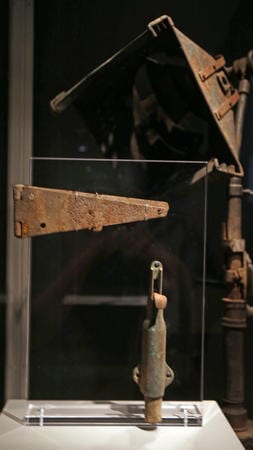
Phil Velasquez / Chicago Tribune
The lamp (top right), door hinge and spring-loaded door stop from the Iroquois Theatre. The lamp caught fire during a performance in 1903, the hinges and door stops kept people in the theater from escaping, as a result 600 people died.
Plus, he said, "It's hard to justify having millions of things if you're not using them and you're not using them in effective ways."
Yet this compendium of the museum's artifacts — linked mostly by their ownership and a shared relevance to Chicago history — does manage to create its own narrative. Like Carl Sandburg's poem "Chicago," it tells of the sweep of a great city. It's an episodic narrative, to be sure, but these are compelling episodes.
The exhibit is also testament to the power an object can hold.
It is difficult to be in the presence of the lamp that started the 1903 Iroquois Theatre fire, presented alongside the door hardware there that prevented 600 people from exiting to safety, without thinking about those poor souls that wanted only an afternoon's entertainment.
It is inspiring to see the letters from the sign at Palm Tavern, the famous Bronzeville jazz club, and imagine the greats who passed under those letters.
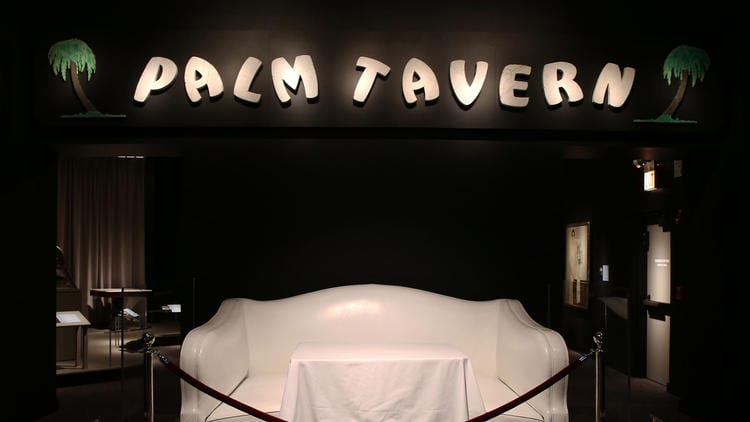
Phil Velasquez / Chicago Tribune
Booth One of the famous Pump Room in the Ambassador East Hotel from 1940 and the wooden letters from the Palm Tavern from 1915.
"The Secret Lives of Objects" follows on the heels of "80 at 80," a terrific Museum of Science and Industry exhibition of a similar nature that was just recently taken down, after staying on exhibit a year longer than originally planned. And the Field Museum is making a franchise out of the concept. The label "Opening the Vaults" has appeared in front of very strong recent shows on mummies and on the 1893 World's Fair.
At first, the Chicago History Museum thought this would be an easy show to mount, Russick said. For about half a decade, it's been highlighting one backroom object at a time under the label "The Unexpected Chicago."
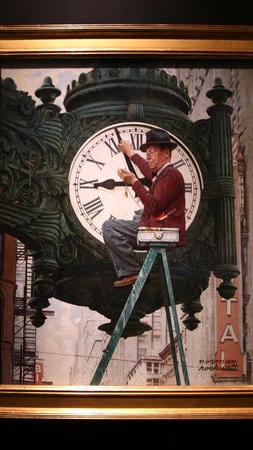
Phil Velasquez / Chicago Tribune
Norman Rockwell's "The Clock Mender" at "The Secret Lives of Objects" exhibit at the Chicago History Museum.
"Secret Lives" was imagined as primarily a collection of "Unexpected" pieces. But, "as soon as we started doing that we found all these artifacts that everybody was so excited about showing," said Russick. "We really upended the whole idea that this was going to be an easy show to do."
Of the 42 objects that made the final cut, more than 30 were not part of "Unexpected Chicago," almost a reversal of the ratio originally envisioned.
The show is compact but not underpopulated. It exists in, essentially, two big galleries; there is plenty to read and take in.
The design, like that for its website (secretlivesobjects.com), is stellar. Dramatic lighting highlights the idea that these artifacts are getting a starring role.
A film piece by Chicago's Manual Cinema, the cutting-edge shadow puppet company, puts some of the objects into artful motion on a big screen in the center of the main gallery.
Less wholly successful is the curators' idea to give the objects personality by presenting their stories in the first person. "I helped make Charlie Chaplin a star," says the cane. "We witnessed a horrible murder," the eyeglasses explain, using the first person plural, as spectacles, naturally, would do.
The Colt revolver that Owen Brown, son of John, carried in the raid on Harpers Ferry, has imperfect diction. "It don't end there," the gun says at one point.
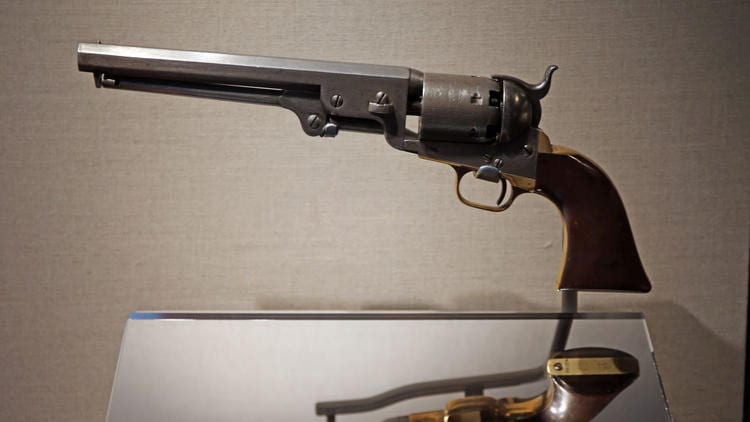
Phil Velasquez / Chicago Tribune
The Colt pistol owned by Owen Brown, son of abolitionist John Brown. The gun was used at the famous raid on Harper's Ferry in 1859.
If there were more than these few dozen objects, the cumulative effect could be cloying. But it's not like reading a newspaper story written from the point of view of a dog; these imagined monologues have been crafted by a good writer. And give the museum credit for trying to break out of the dispassionate curator mode.
Bigger picture, give it credit for letting its collection shine.
"For a long time museums have kind of gotten into the feeling that they needed to try to tell some kind of grand narrative," Russick said. "We just felt that we should make sure the artifacts are more front and center than that."
And there are plenty more where these came from. "We could easily do a round two," he said.
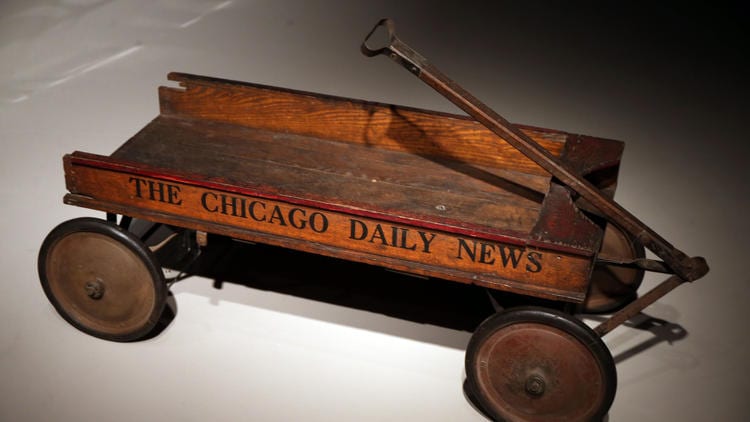
Phil Velasquez / Chicago Tribune
A 1900 Chicago Daily News delivery wagon at "The Secret Lives of Objects" exhibit at the Chicago History Museum.
'The Secret Lives of Objects'
When: Through 2018
Where: Chicago History Museum, 1601 N. Clark St.
Tickets: Included with general admission ($14); 312-642-4600 and chicagohistory.org or secretlivesobjects.com
Copyright © 2015, Chicago Tribune
This entry was posted in , Miscellaneous, Bldg. 51, Events & Announcements & Featured Posts on March 26 2015 by Eric
WORDLWIDE SHIPPING
If required, please contact an Urban Remains sales associate.
NEW PRODUCTS DAILY
Check back daily as we are constantly adding new products.
PREMIUM SUPPORT
We're here to help answer any question. Contact us anytime!
SALES & PROMOTIONS
Join our newsletter to get the latest information
























